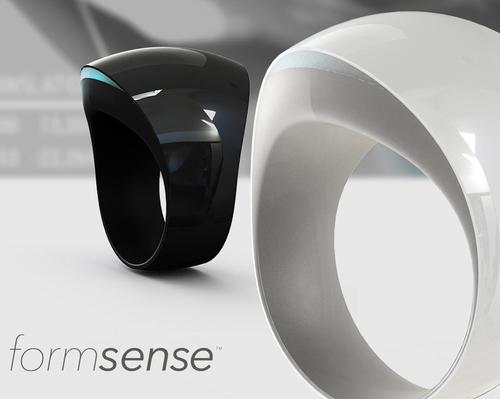15 Sep 2020
Smart rings to be used to get stroke survivors more physically active
BY Tom Walker

Wearable tech firm Formsense has secured a technology partnership with an inter-interdisciplinary team of researchers looking to help stroke survivors be more physically active.
The team is developing a mobile health (mHealth) system to monitor and encourage movement and activity in the weak upper limb of stroke survivors.
At the heart of the system will be Formsense's wearable sensor, which slips on a finger like a ring.
Sensors in the smart ring have the capability to provide individually tailored data to encourage the use of the affected limb.
The team – led by Sunghoon Ivan Lee from the University of Massachusetts Amherst – has secured a five-year, US$2.4m grant from the National Institutes of Health (NIH) under a programme called Academic-Industrial Partnerships for Translation of Technologies for Diagnosis and Treatment.
Utilising Formsense technology, Lee will lead the interdisciplinary team which also includes Paolo Bonato and Randi Black-Schaffer from Harvard Medical School and Eun Kyoung Choe from the University of Maryland.
Lee is aiming to develop an mHealth system, using wearable sensors, to measure how much people used their affected arm following a stroke and to gauge how rigorously and vigorously they’re moving,
In a pilot study – which was interrupted by the pandemic – four stroke survivors tested the prototype device and gave encouraging feedback.
The larger scale research will now focus on translating the data created by the smart ring to create a comprehensive visualisation that will motivate patients and inform clinicians.
“Patients can try hard to raise up their arm and hand to do the other exercises in the clinical setting to try to get back to normal, but when they go home, they tend not to make use of the impaired side because they have this other perfectly good limb,” Lee said.
“The problem is if that continues then they will lose that functionality on one side, which may lead to more serious consequences, like falling.”
Lee added that some existing wrist-worn sensors are capable of detecting gross arm movements, but not the more detailed and nuanced motion of the hands.
“To measure how people actually make use of their limbs, we need to capture more than gross arm movements,” Lee says.
“Fine hand movement is also important; that is how we interact with the world.
“How can we give information back to the patient so they can use it? And how can this comprehensive view of how they are actually performing at home be used in the clinical setting?”
Nathan Ramasarma, founder and CEO of Formsense, added: “As a research-driven company, Formsense supports early and strong collaborations in academia in order to validate its technologies and explore commercial solutions that can accelerate adoption in the market.
“The vision of Formsense was always to improve the quality of people’s lives and the confirmation of this grant from the NIH is particularly gratifying to me and the whole team at Formsense.”
According to official figures, each year, nearly 800,000 people in the US suffer a stroke. Weakness on one side of the body, especially the arm, is the most common disability following a stroke, affecting some 75 per cent of survivors.
Maintaining restored function during and after rehabilitation therapy depends on the patient continuing to use and exercise the affected arm.
Close Window